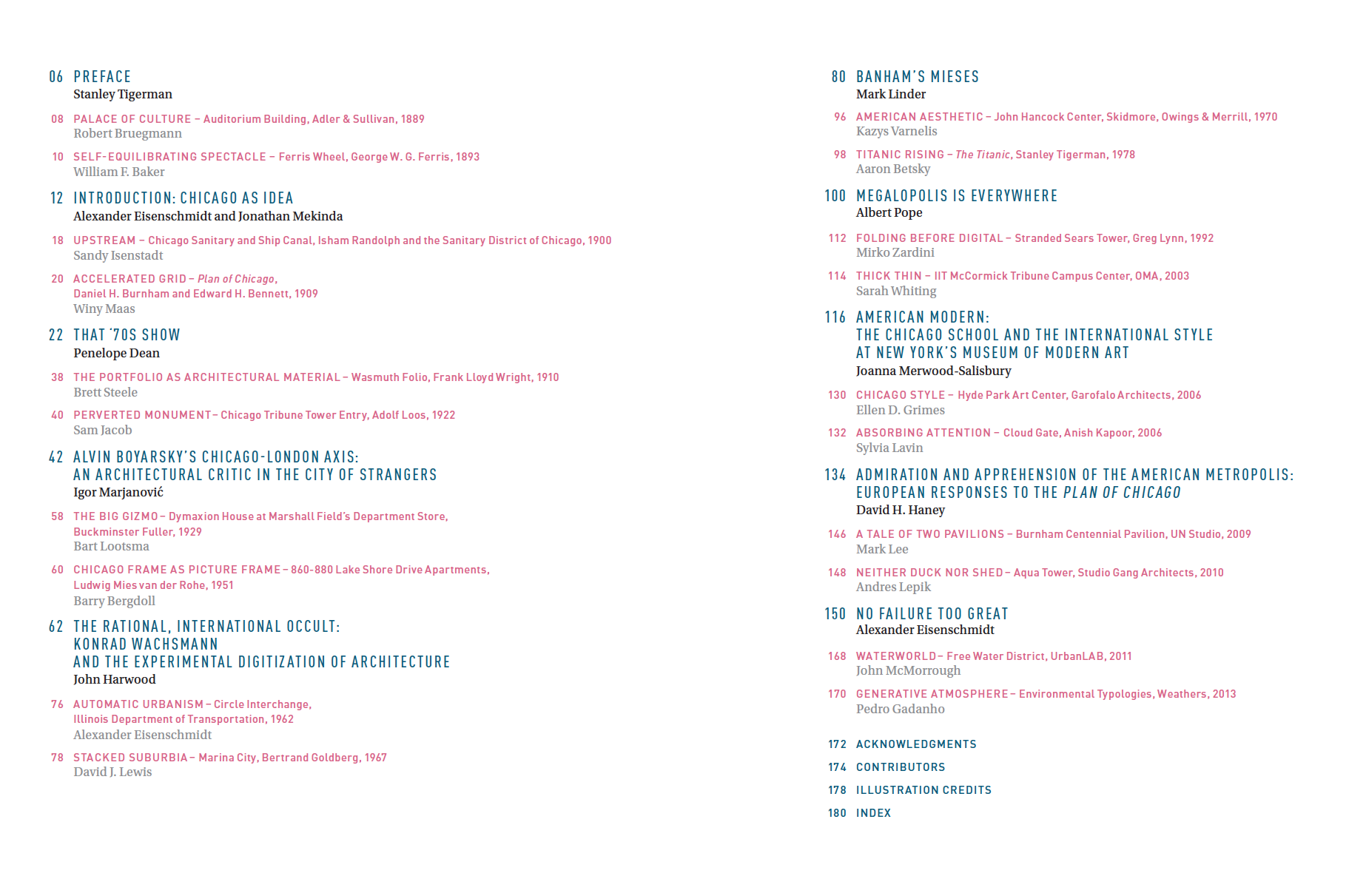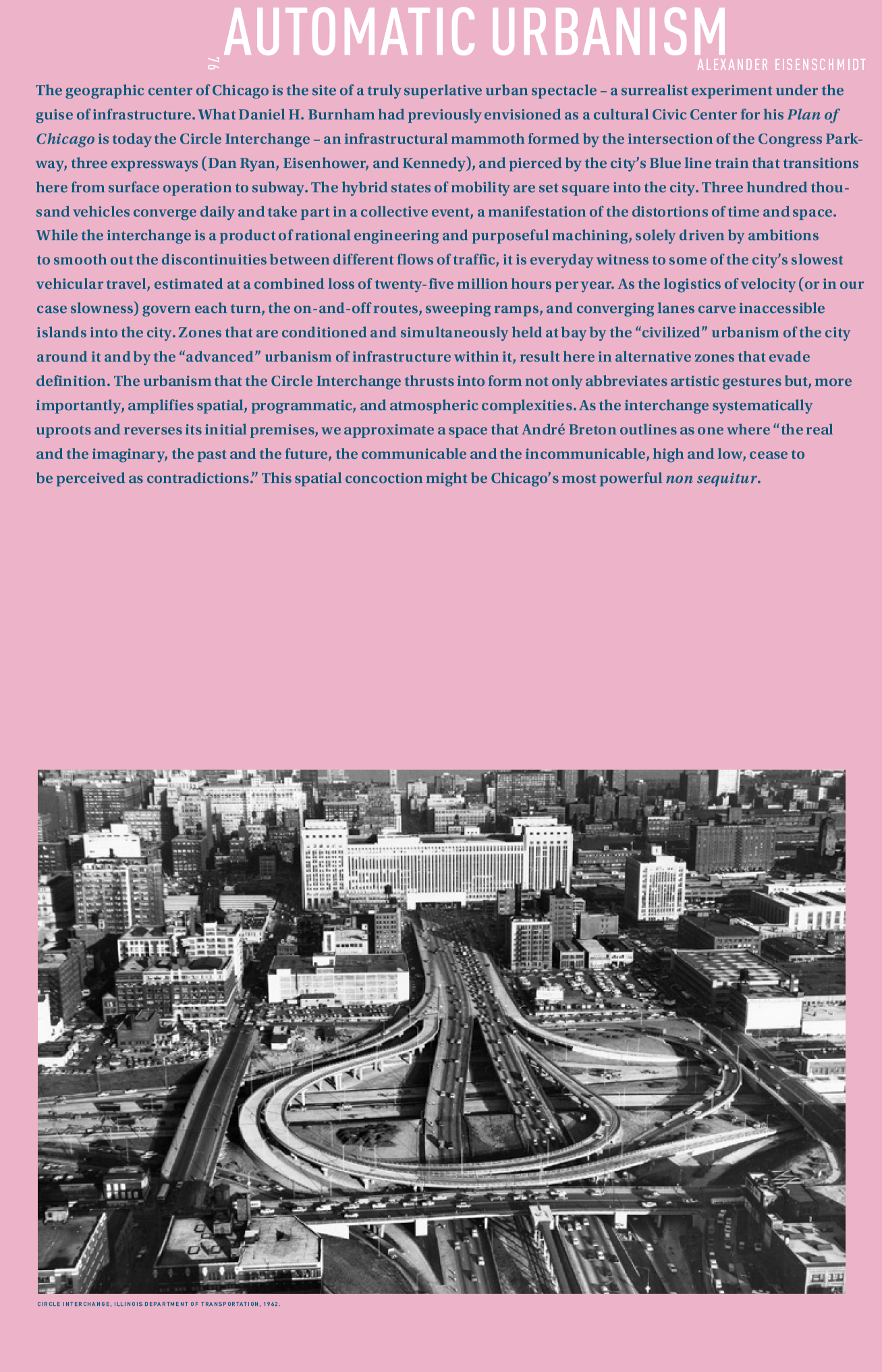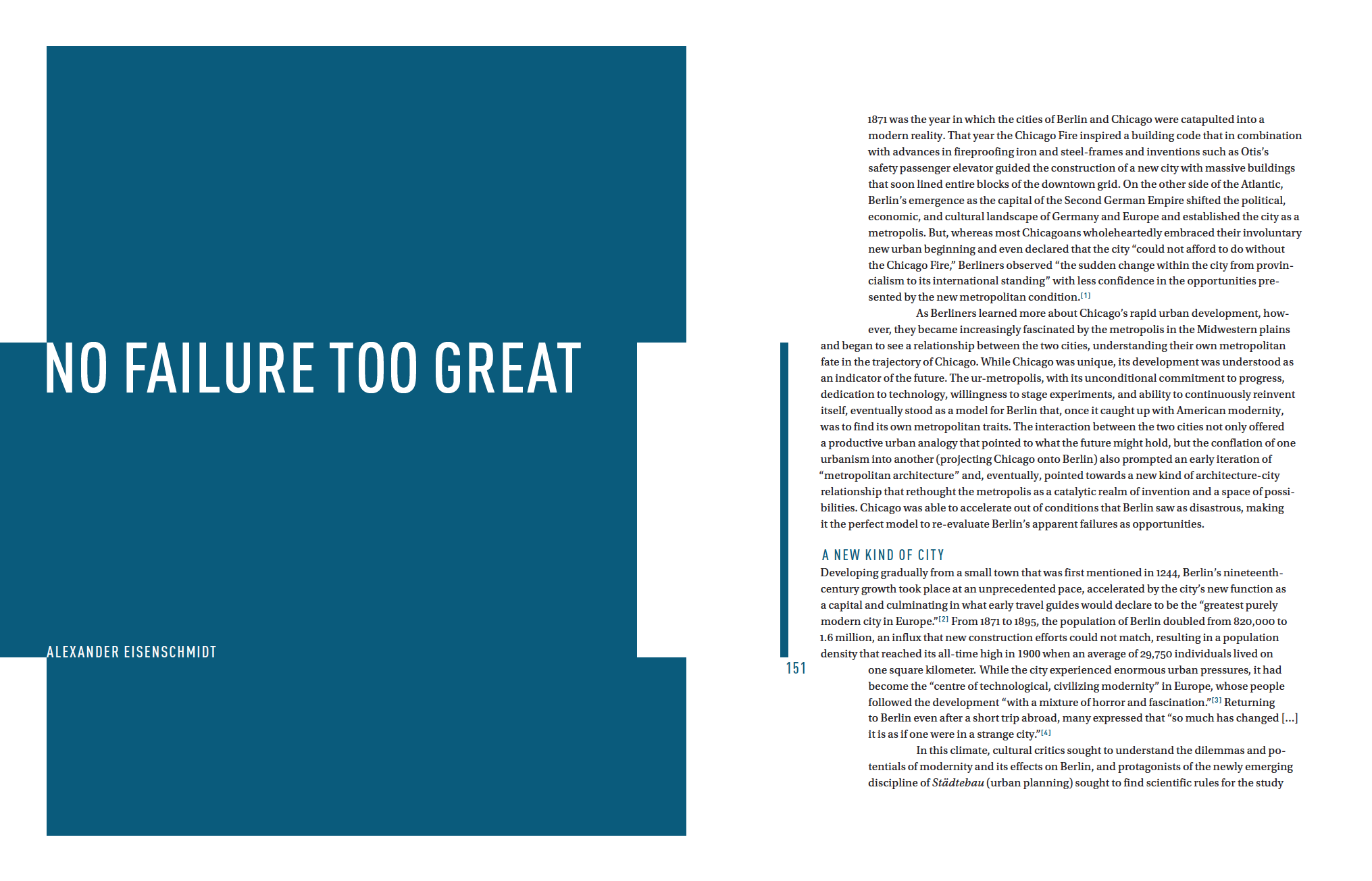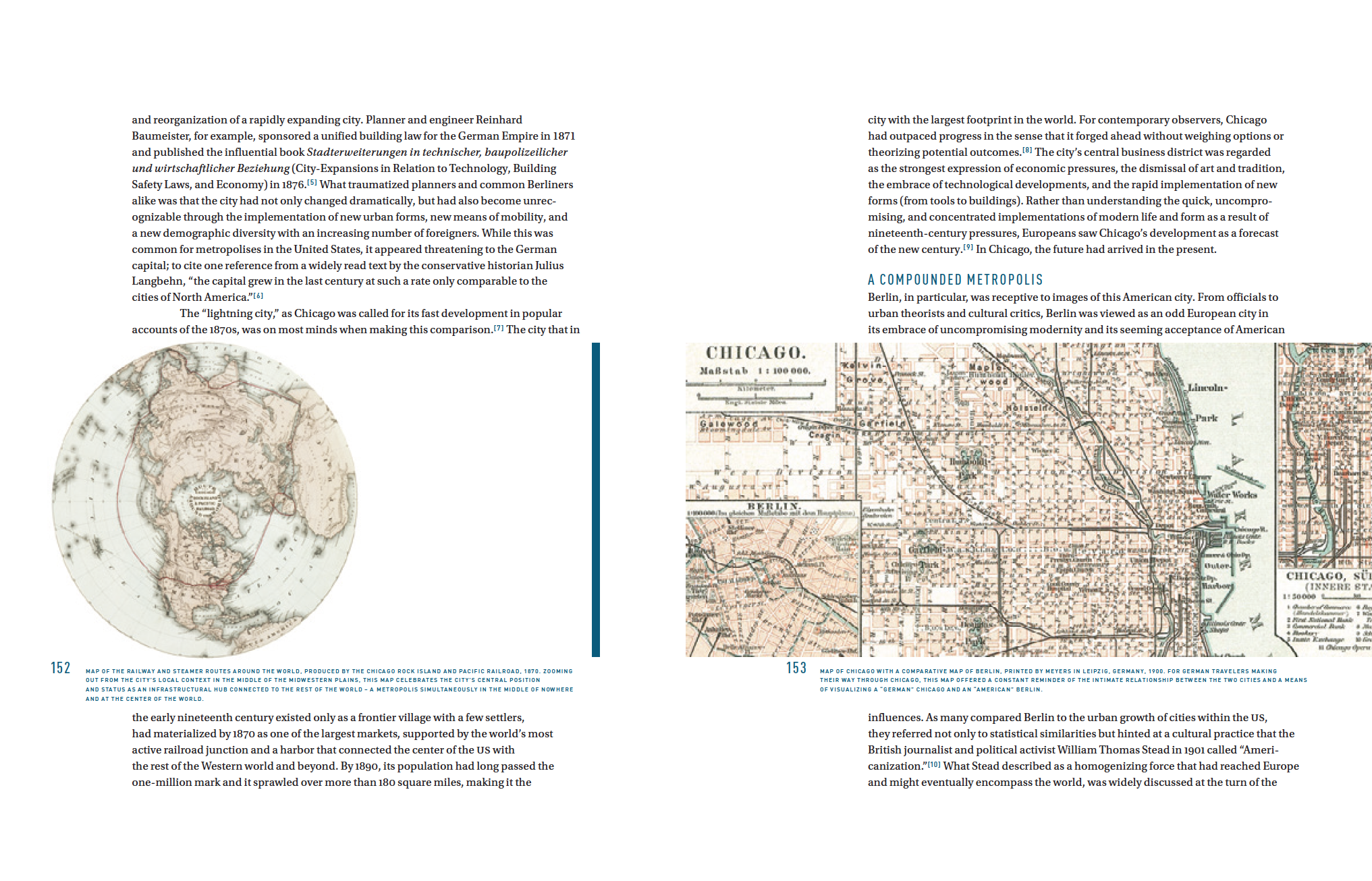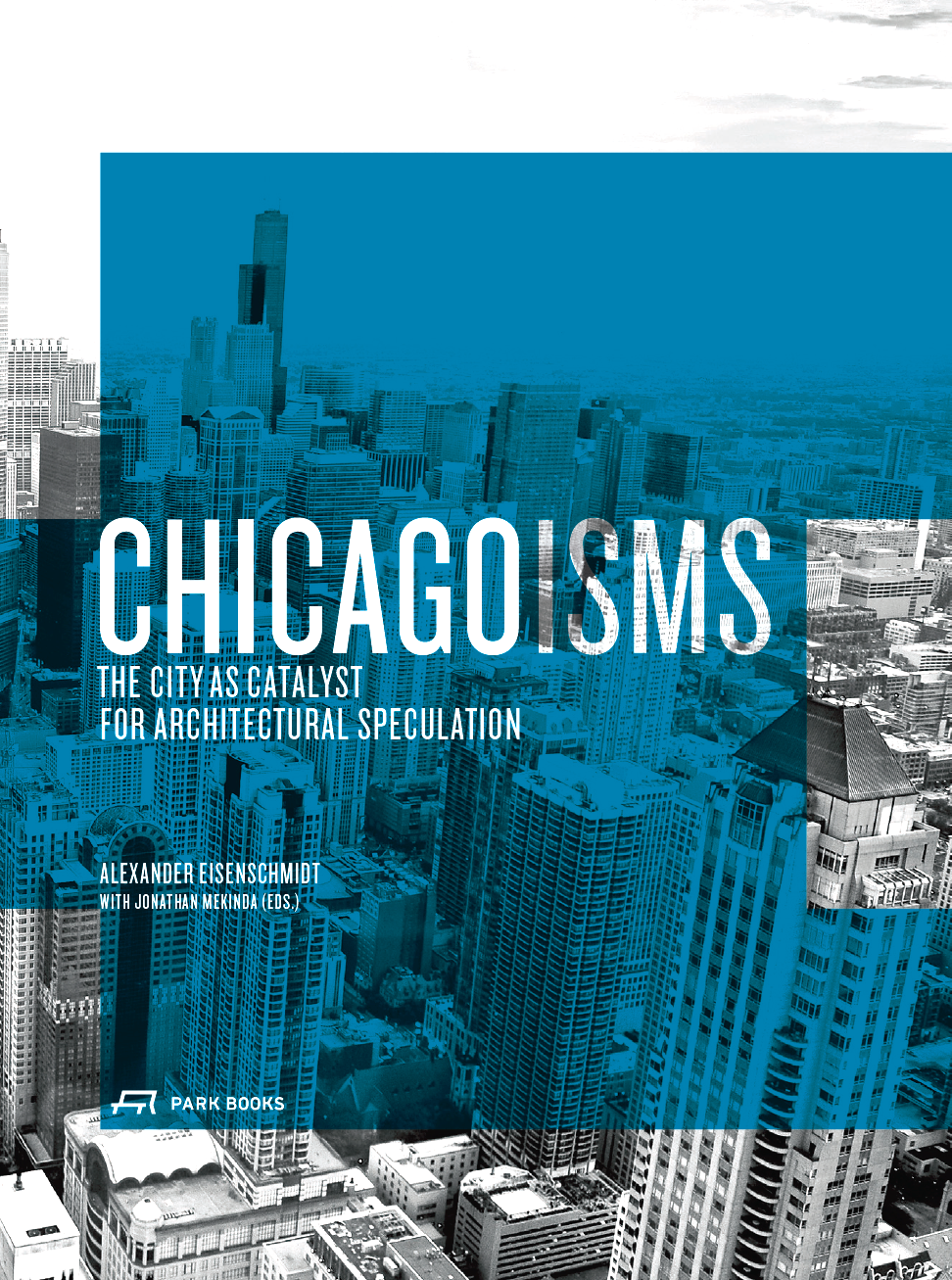
Chicagoisms: The City as Catalyst for Architectural Speculation, eds. Alexander Eisenschmidt with Jonathan Mekinda (Zürich: Scheidegger & Spiess/Park Books, 2013).
Chicagoisms is a collection of essays on the various roles that Chicago has played as a catalyst for the exchange of urban and architectural ideas. In a series of original essays, a diverse roster of distinguished and emerging historians, theorists, curators, and architects explores the different ways that Chicago has influenced the evolution of the architectural discourse in the US and around the world. The book involves 28 authors in a collective interrogation of Chicago as a springboard for architectural and urban speculation. The aim is to instigate a new way of thinking about the city’s influence on the global architectural discourse. Contributions include: a preface by Stanley Tigerman; essays by Penelope Dean, John Harwood, David Haney, Mark Linder, Igor Marjanović, Joanna Merwood-Salisbury, and Albert Pope; project commentaries by William Baker, Barry Bergdoll, Aaron Betsky, Robert Bruegmann, Pedro Gadanho, Ellen Grimes, Sandy Isenstadt, Sam Jacob, Sylvia Lavin, Mark Lee, Andres Lepik, David Lewis, Bart Lootsma, Winy Maas, John McMorrough, Brett Steele, Kazys Varnelis, Sarah Whiting, and Mirko Zardini; as well as my essay, “No Failure Too Great,” a commentary on the circle interchange, entitled “Automatic Urbanism,” and the introduction “Chicago as Idea” (co-authored with Jonathan Mekinda). Published by Scheidegger & Spiess / Park Books, the volume was first presented at the Frankfurt and the Leipzig Book Fair in 2013. It is available in stores worldwide and in the US through distribution by the University of Chicago Press. You can order it here.
Introduction Excerpt:
… Rather than celebrating the city’s rootedness in a distinct regional environment, this collection of essays interrogates Chicago’s connectedness to a larger global network of people and institutions, forces and ideas. In particular, it focuses on two aspects of the life of the city that are often overlooked, namely its remarkable power as a transmitter of ideas about the modern city and its particular capacity to foment radical architectural and urban visions. Having served as a source of inspiration and a site of activity for architects, urbanists, and theorists around the globe, Chicago is here examined for its ability to act constructively as a mediator of ideas – an architectural broadcaster of sorts – and as an instigator of speculation – a kind of urban incubator.
Chicago’s engagement with the world performs then in two directions: away from the city, via its activity as an exporter of architectural and urban ideas, and toward it, by offering the city as a test-bed for speculative agendas imported from abroad. Adolf Loos and Frank Lloyd Wright are just two of the many figures who demonstrate how the city operates in these capacities. Loos visited the city in 1893 to see the World’s Columbian Exposition using money his mother only gave him on the condition that he never return home, while Wright abandoned his established life and practice in the city when he left for Europe in 1909. Both acted as carriers of ideas: Loos absorbed the lessons of the so-called “Chicago School” and brought the ideas of Sullivan to Europe, while Wright’s Wasmuth Portfolio linked international modernism forever to the American Mid-west. Eventually, Loos and Wright also returned to Chicago with more radical proposals for the Tribune Tower of 1922 and the National Life Insurance Building in 1924 respectively. For both architects, Chicago not only provided a critical impulse for their excursions – acting as an accelerator to the transmission of their architectural agendas – but also offered solid ground for the projection of their speculative proposals. …
Page Excerpts:
Press Coverage:
“Book Review: Three Books About Chicago,” A Daily Dose of Architecture, by John Hill, August 2014. “Many histories repeat […] myths and simplifications, but this great book thankfully goes the opposite route, dismantling some of those myths and putting Chicago in an international context” and “… the book is one of the freshest recent books on architecture in Chicago.”
“Shelf Life,” the top 33 books suggested by readers, Architecture Boston and ArchDaily, August 2014. Chicagoisms is #14, followed by Koolhaas’ Delirious New York and Wolfe’s From Bauhaus to Our House.
“Chicagoismos,” Arquine, by Juan Manuel Heredia, June 2014.
“Chicagoisms Honors the Windy City’s Architectural Clout,” Archinect, by Amelia Taylor-Hochberg, June 2014.
“The City as Catalyst for Architectural Speculation,” Dwell, by Patrick Sisson, May 2014.
“Is Chicago Architecture too Enamored of its Own Past?” Chicago Reader, by Laura Pearson, April 2014.
“Chicagoisms,” RIAS Quarterly, by Peter Robinson, Issue 17, Spring 2014.
“Buchtipp: Architektur-Katalysator,” Wohnrevue, January 2014.
“Von Chicago in die Welt,” Umrisse: Zeitschrift für Baukultur, by Elisabeth Plessen, Issue 5/6, 2013.
The publication was made possible by the generous support of: The Graham Foundation for Advanced Studies in the Fine Arts, the Office of the Vice Chancellor for Research at the University of Illinois at Chicago, and the College of Architecture, Design and the Arts at the University of Illinois at Chicago.
